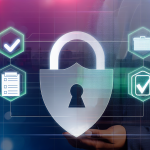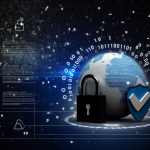
Understanding Security Compliance: The Key to Safeguarding Your Business
July 18, 2025
Why Security Compliance Matters: Protecting Your Data in a Digital World
July 19, 2025
In today’s hyper-connected world, cybersecurity is not just an IT issue; it’s a fundamental business priority. With increasing cyber threats and regulatory scrutiny, organizations must adopt a systematic approach to cybersecurity, encompassing everything from risk assessment to incident response. This article outlines a comprehensive cybersecurity compliance checklist to help organizations strengthen their defenses and ensure regulatory compliance.
1. Understanding Cybersecurity Compliance
Cybersecurity compliance refers to adhering to legal, regulatory, and internal standards designed to protect sensitive information from cyber threats. Many industries have specific regulations, such as HIPAA for healthcare, PCI-DSS for payment card data, and GDPR for data protection.
Importance of Cybersecurity Compliance:
- Trust: Establishes trust with customers and stakeholders.
- Risk Mitigation: Reduces vulnerabilities and potential losses.
- Legal Protection: Minimizes the risk of fines and legal issues.
- Reputation Management: Safeguards the organization’s reputation in the market.
2. Conducting a Comprehensive Risk Assessment
Steps to Conduct a Risk Assessment:
- Identify Assets: List all digital assets including hardware, software, and data.
- Evaluate Vulnerabilities: Identify weaknesses that could be exploited by attackers.
- Assess Threats: Discover potential threats to assets, such as hackers, malware, and insider threats.
- Impact Analysis: Evaluate the potential impact of a successful attack.
- Determine Likelihood: Estimate how likely each threat is to occur.
- Prioritize Risks: Rank risks based on their potential impact and likelihood.
3. Implementing Security Controls
Once risks are assessed, organizations must implement security controls to mitigate them. Consider establishing the following controls:
Preventive Controls:
- Firewalls: Protect the network perimeter.
- Access Controls: Implement user authentication and authorization measures.
- Encryption: Protect data in transit and at rest.
Detective Controls:
- Intrusion Detection Systems (IDS): Monitor network traffic for suspicious activities.
- Security Information and Event Management (SIEM): Collect and analyze logs for threats.
Corrective Controls:
- Patch Management: Regular updates to fix vulnerabilities in software.
- Incident Response Plans: A defined process to respond to and recover from incidents.
4. Employee Training and Awareness
Human error remains a significant risk in cybersecurity. Implement ongoing training programs that cover:
- Phishing Awareness: Educate employees on recognizing phishing attempts.
- Password Hygiene: Train on the importance of strong passwords and multi-factor authentication.
- Data Handling Best Practices: Provide guidelines on how to handle sensitive information securely.
5. Establishing an Incident Response Plan
Despite the best preventive measures, incidents will occur. An effective incident response plan (IRP) is vital for minimizing damage. Essential components include:
Incident Response Phases:
- Preparation: Develop a response strategy and resource allocation.
- Detection and Analysis: Monitor systems to identify and determine the scope of an incident.
- Containment, Eradication, and Recovery: Contain the incident, eliminate the threat, and recover systems to normal operations.
- Post-Incident Activity: Conduct a post-incident review to identify lessons learned and improve future responses.
Importance of Continuous Improvement:
An IRP should be a living document that evolves with new threats and technological advancements. Regularly test and update the plan with simulations and real-world incidents.
6. Regular Audits and Compliance Checkups
Conduct regular audits to ensure compliance with relevant regulations and the effectiveness of your cybersecurity measures. Audits help in:
- Identifying Compliance Gaps: Ensure all relevant regulations are being followed.
- Evaluating Control Effectiveness: Assess whether security controls are working as intended.
- Documenting Processes: Maintain records for compliance purposes.
Conclusion
Cybersecurity compliance is an ongoing process that requires a proactive approach from organizations of all sizes. By following a comprehensive checklist that starts with risk assessment and extends to incident response, businesses can fortify their defenses against cyber threats and comply with regulatory requirements. To stay ahead of emerging risks, it is essential to cultivate a culture of cybersecurity awareness and continuously adapt to the evolving threat landscape. The stakes are high, but a structured approach will pave the way for a more secure business environment, fostering trust and resilience.







